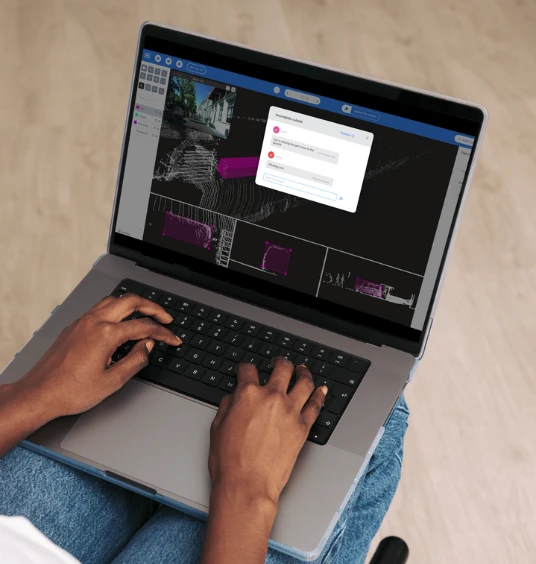One platform to annotate all your data for
Lidar Sensor fusion
Label data from multiple sensors with authority and create high quality, consistent datasets to empower a variety of sensor fusion use cases.
All the tools you need for complex multi-sensor data
Image projection over point cloud
Add as many camera images with each point cloud frame as you want. All Lidar annotations are automatically projected onto images to provide you the right context.
Consistent object IDs across sensors
Quickly attach annotated objects in images with their corresponding objects in point clouds, maintaining consistent instance IDs for all instances of the same object across sensors.
Powerful QA tools
Use honey-pot and multi-annotator setup to setup a robust QA pipeline for your annotations. Automatically calculate Quality metrics and export detailed reports for each task.
Automatic Image segmentation
Manually annotating images for segmentation is so 2010. Use Magic Segment - our automatic image segmentation annotation tool - to quickly segment objects in images in just a few clicks.
Learn more3D Point cloud Segmentation
Traditional methods of using a brush to select points can be error prone. With the lasso tool, you can easily select points you want to add or remove from the annotation.
This reduces friction as the you don't not have to be super accurate with your mouse movements.
Annotate 3D cuboids in a single click
Here's something you will love! Click anywhere within the object of interest to automatically annotate with a cuboid.
1-click annotation is class agnostic. It works as long as there are enough points to describe the outline of the object.
Predicts the rotation as well as the position and dimensions of the cuboid.
Processes the point cloud right inside the browser, making it really fast.

How to setup effective Quality Control for Multi-sensor annotation
Automatically track objects with interpolation
Uniquely identify objects across many point cloud frames, and drastically reduce annotation time by leveraging automatic interpolation.
You label a few keyframes, and the intermediate frames are automatically labeled using interpolation. While this works well, you have to move back and forth between keyframes to ensure the interpolation is correct.
You label the first two frames, and all subsequent frames are automatically labeled. Since frames are usually labeled in sequence, this provides a more natural method of automatic labeling using interpolation.
And much more to love

Label RGB point clouds
Have dense RGB pointclouds with millions of points? Labeling them on the Mindkosh platform is a breeze!Highlight FOV
Want to only label objects within a certain distance from the ego vehicle? Or within a certain Field of View (FOV)? No problem!Complex label ontology
Add additional properties to labels and change values directly on the annotation page. Mark a property immutable to keep it unchanged for all frames.Track static objects
Track static objects across multiple frames by locking their position, so change in any frame is copied to other frames.Slash project management overhead
Drastically reduce management overhead through efficient project management, detailed reports, easy-to-setup QA workflows and much more.
-
Task management
Stay on top of your annotation tasks with Projects, tasks and batches. Divide tasks into batches to quickly divide work, and combine tasks into projects to keep everything organized.
-
User permissions
Assign roles to your team members and control who can do what in your projects.
-
Annotation modes
Move your batches into Annotation, Validation or Completed modes to keep track of exactly how much work remains to be done
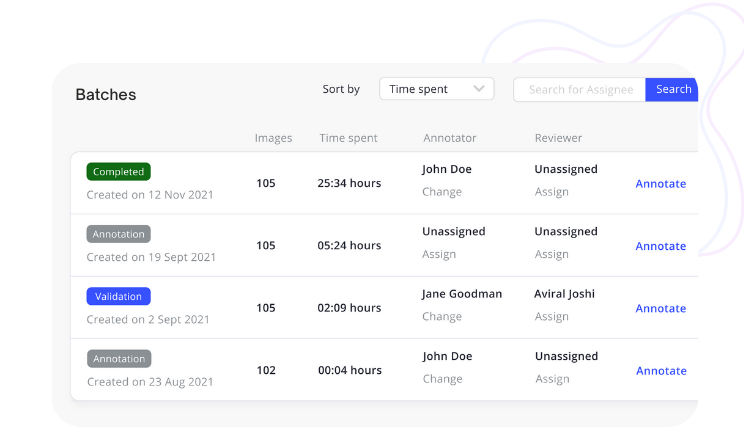
-
Multi-annotator setup
Get your data labeled by multiple annotators and use consensus metrics to choose the best annotations.
-
Honeypot setup
Setup honeypot to assign accurate Quality metrics to your annotation tasks.
-
Quality metric
Dive deep into your dataset with automatically calculated Quality metrics like IoU, accuracy, confusion matrix etc.
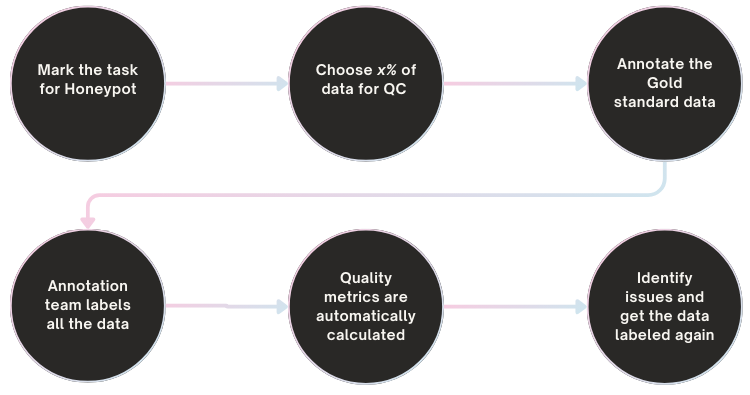
-
Mark issues
Free-flowing communication is key to ensuring high quality annotations. Pin-point mistakes within your data with issues.
-
Chat with team-members
Talk with your team-members right within an issue to get to the source of the problem.
-
Measure quality
Use number of resolved and unresolved issues as a measure of the quality of annotations of a task.
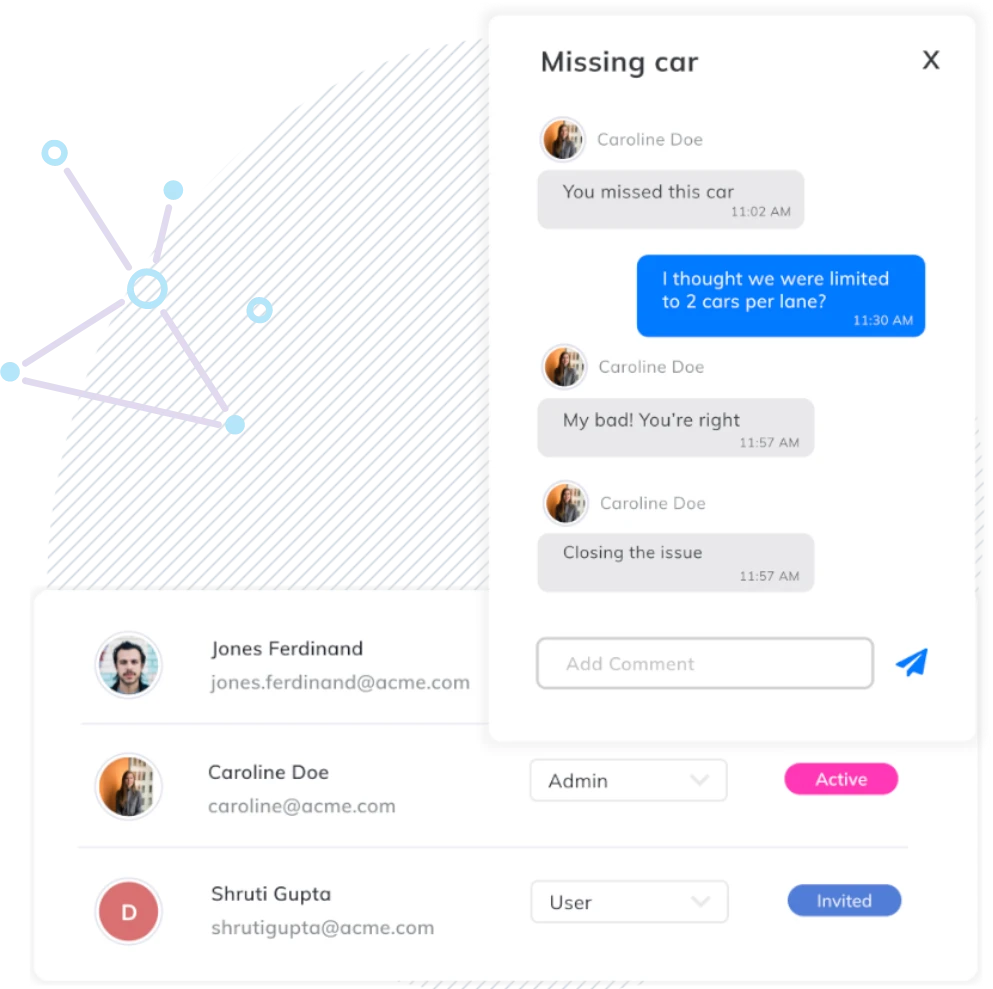
-
Time your annotation tasks
Know exactly how much time each member of your team spent annotating data.
-
Detailed project reports
See the status of your labeling tasks in a central place, and identify potential bottlenecks in your workflow.
-
Share with all stakeholders
Export the information as CSV and share it with your team or end customers.
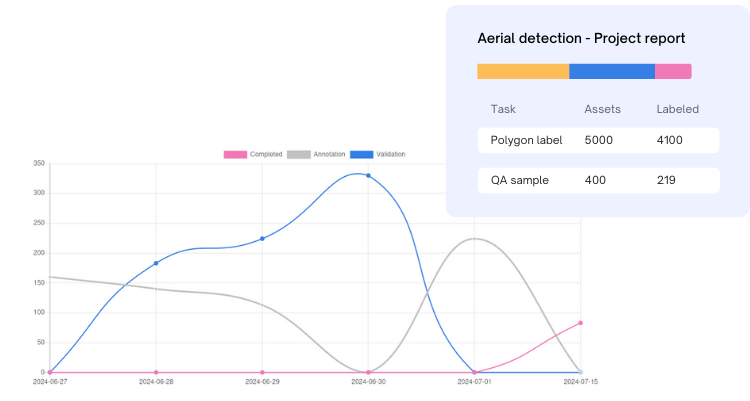
-
Create releases
Export your data as a release and name it so you can identify it later. Keep the last 5 releases so you can download them anytime.
-
Choose what to export
Choose the batches you want to export, so you dont have to download everything everytime something is updated
-
Export formats
Export your LIDAR annotations in KITTI format. More formats are coming very soon!

Just looking to get your data labeled ?
Want to get your datasets labeled quickly? Or need a hand accelerating your data labeling efforts?
Leave the hassle of data labeling to us. Just share your data with our team, and we will handle the rest.
